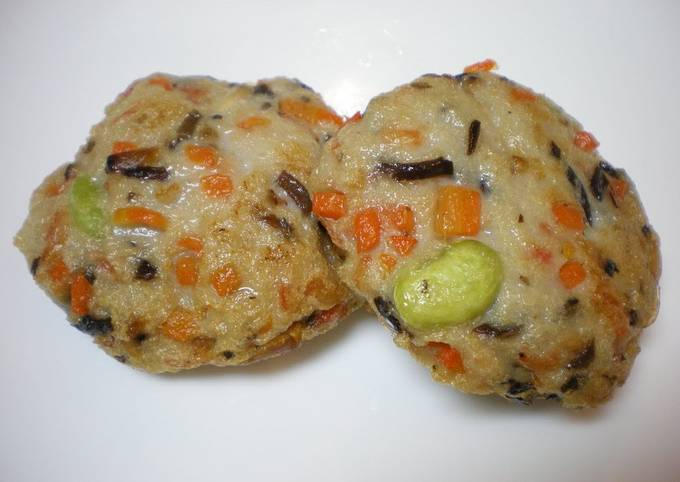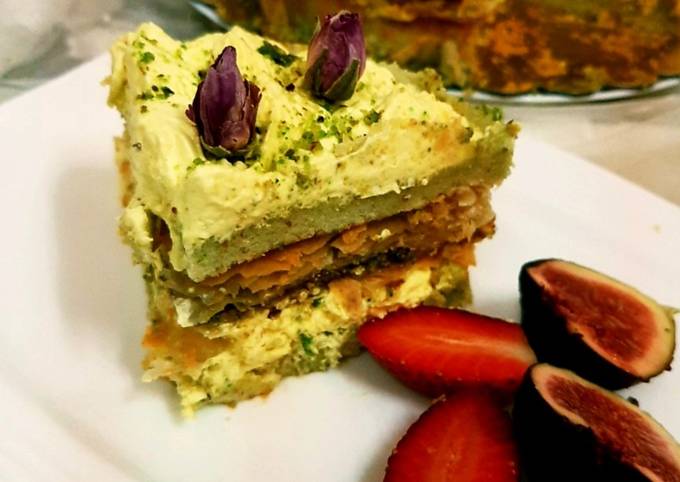
Hello everybody, it is Jim, welcome to our recipe site. Today, I will show you a way to make a distinctive dish, home-made satsuma-age fish cakes. One of my favorites food recipes. For mine, I am going to make it a little bit tasty. This will be really delicious.
Japanese fish cakes are made in a similar way to Thai fish cakes but the flavourings are less spicy and use common Japanese seasonings. It is also a fish cake but instead of deep frying the fish cake, it is steamed and then grilled. Thai Fish Cakes Recipe (Tod Mun Pla) ทอดมันปลา - Hot Thai Kitchen! How to Make Nikuman (Chinese Steamed Pork Bun Recipe)
Home-made Satsuma-age Fish Cakes is one of the most well liked of recent trending foods on earth. It’s appreciated by millions daily. It’s easy, it is fast, it tastes delicious. They are nice and they look wonderful. Home-made Satsuma-age Fish Cakes is something that I’ve loved my whole life.
To begin with this recipe, we must first prepare a few ingredients. You can cook home-made satsuma-age fish cakes using 11 ingredients and 8 steps. Here is how you can achieve that.
The ingredients needed to make Home-made Satsuma-age Fish Cakes:
- Take 400 grams White fish such as cod
- Prepare 30 grams Lima beans (frozen ones are OK)
- Take 30 grams Carrot
- Make ready 20 grams Wood ear mushrooms (rehydrated and squeezed out of the excess water)
- Make ready 2 tbsp Dried shrimps
- Prepare 2 Dried shiitake mushrooms (rehydrated and chopped finely)
- Prepare 16 grams Sugar
- Get 7 grams Salt
- Prepare 1 tsp each Soy sauce and juice from grated ginger
- Get 16 grams Cornstarch
- Make ready 2 tsp of water and sake Water to dissolve the cornstarch
Satsuma refers to Kagoshima, an area of Japan, which was once known as Satsuma. Age means fried, so together they mean fried in the style of. Satsuma Age (薩摩揚げ, さつま揚げ) is a type of fried fish cakes originating from Kagoshima, Japan. It was originally from Chinese cuisine and then brought over to Okinawa and Kyushu regions.
Instructions to make Home-made Satsuma-age Fish Cakes:
- These are the ingredients. You can see one filet of fish in the photo, but I actually used 2 filets of fish (400 g).
- I used 2 kinds of fish and you can see the difference of the colour in this photo. Blitz the fish in a food processor.
- Transfer the fish into a mortar (with pestle) bowl.
- My mortar and pestle is small, so I ground the fish until smooth in 4 batches. This is a tiring job, but you will have plump fish cakes by doing this process.
- Add the sugar and salt and grind the mixture further. Add the cornstarch dissolved in water and sake, and stir in the wood ear mushrooms and carrot.
- Add the soy sauce and juice from the grated ginger, and shape the mixture into balls. Personally, I believe the wood ear mushrooms and lima beans are essential.
- Deep-fry the fishballs in the oil heated to 100-140˚C for 4-5 minutes. If you use fresh oil, you will have pale-browned fishballs. If the oil has been used many times before, they will be dark-colored.
- It is done. Note: In the photo at Step 5, you can see a naruto sitting next to the fish cakes. I tried to make it for fun.
- Ready to serve and ENJOY!
Satsuma Age (薩摩揚げ, さつま揚げ) is a type of fried fish cakes originating from Kagoshima, Japan. It was originally from Chinese cuisine and then brought over to Okinawa and Kyushu regions. Surimi (fish paste) and flour are mixed to make a compact paste that is solidified through deep-frying, which. Fried fish was known as "Chikiagi" and spread to Kagoshima. From Kagoshima it spread all over the country and has different names in different parts of Japan.
So that is going to wrap it up with this exceptional food home-made satsuma-age fish cakes recipe. Thanks so much for your time. I am confident you can make this at home. There is gonna be interesting food at home recipes coming up. Don’t forget to bookmark this page on your browser, and share it to your loved ones, colleague and friends. Thank you for reading. Go on get cooking!

